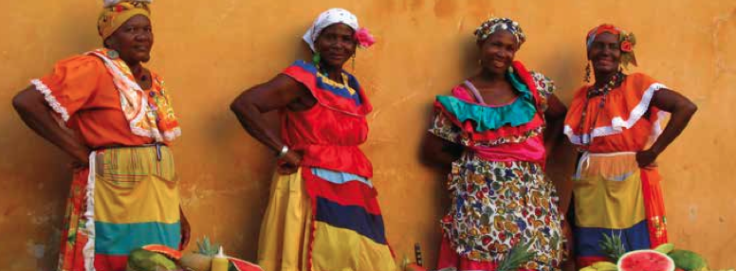
Search
In Brief: Roundtable and dashboard for the reduction of poverty in Colombia

“In Brief” is a section of Dimensions magazine that provides short versions of the Multidimensional Poverty Peer Network’s policy briefings series. In this issue, we summarize a briefing on Colombia by Diego Zavaleta and Roberto Angulo.
Colombia launched its official multidimensional poverty measure in 2011 – the Colombian Multidimensional Poverty Index (C-MPI). The index was first used to establish specific policy goals for multidimensional poverty reduction as well as sector-specific targets within the National Development Plan – a mandatory and binding strategy that all incoming administrations must have approved by Congress at the beginning of their mandate.
A crucial innovation in the Colombian process was the design of a monitoring system to track the progress of the Development Plan. This system was based on two main components. The first was a poverty roundtable – a board chaired by the President of Colombia and attended by all ministers and authorities whose work affected particular indicators of the C-MPI. The second component was a dashboard system where progress in different indicators, including the 15 components of the C-MPI.
The Poverty and Inequality Roundtable was a high-level committee of the executive branch of government established to monitor poverty reduction in the country. The roundtable was convened and led by the President of Colombia to monitor the poverty reduction strategy. This committee met for the first time in 2011 and was convened at least twice a year for the rest of President’s Santos first term in office.
The roundtable included all ministries and institutions directly involved in the national poverty and inequality reduction strategy, namely, the ministries of education, health, housing, rural development, labour, and economy, as well as three ministerial-level administrative departments: the National Planning Department (Departamento Nacional de Planeación or DNP), the Department for Social Prosperity (Departamento para la Prosperidad Social or DPS), and the National Statistics Department (Departamento Administrativo Nacional de Estadística or DANE). Other institutions with relevant roles in the strategy were also included depending on the agenda of the specific meeting. The DNP or DPS served as the technical secretariat for the roundtable. Participation in these meetings was compulsory for the ministers and directors – only on limited occasions were subordinates allowed to replace the highest-ranking official of the institution.
The roundtable reviewed the poverty and inequality dashboard and took corrective decisions if milestones were not being reached. The dashboard encompassed four overall indicators that could be updated on a yearly basis: the monetary poverty index, the Gini coefficient, the C-MPI, and the number of families that had overcome extreme poverty within the UNIDOS (comprehensive strategy for overcoming poverty). These indicators corresponded to each of the official goals in the National Development Plan.
The Poverty and Inequality Roundtable and the dashboard proved useful tools for multidimensional poverty reduction through different channels
The dashboard also exhibited the 15 individual indicators of the C-MPI. The annual results were contrasted with the estimates generated by the microsimulations in order to evaluate progress and take corrective actions if needed. Progress towards the achievement of these goals was illustrated through a traffic-light system, where a red dot attached to an indicator indicated a 0%–10% advance towards the quarterly or yearly goal, a yellow dot represented a 10%–25% advance, and a green dot represented 25% or more.
The Poverty and Inequality Roundtable and the dashboard proved useful tools for multidimensional poverty reduction through different channels.
First, they provided a practical and straightforward management tool for the highest authorities in the country to monitor their progress towards clearly established goals. The design of the IPM-C (with an orientation of political public clear e indicators very sensitive to results concrete) and the simplicity of the system of monitoring exposed them achievements and them errors of each Minister or director. The design of the C-MPI (with a clear policy orientation and very sensitive indicators to concrete policy outcomes) and the simplicity of the monitoring system exposed successes and failures of each responsible manager.
Moreover, ministers (who usually tend to focus primarily on their own sectors) became exposed to the overall situation regarding poverty reduction in the country and the need to properly to coordinate actions between sectors in order to enhance poverty reduction.
Finally, it created an internal and external accountability tool both the government and the general public became aware of the specific results of the plan and who was responsible for them. However, an important concern is the sustainability of these tools, as the lack of institutionalisation made them ultimately dependent on the will of the President or a very high authority to pursue them.
Read the full article here.
* Translated from Spanish to English by Elisenda Martinez, UN Volunteer. Revised by Ann Barham.
















